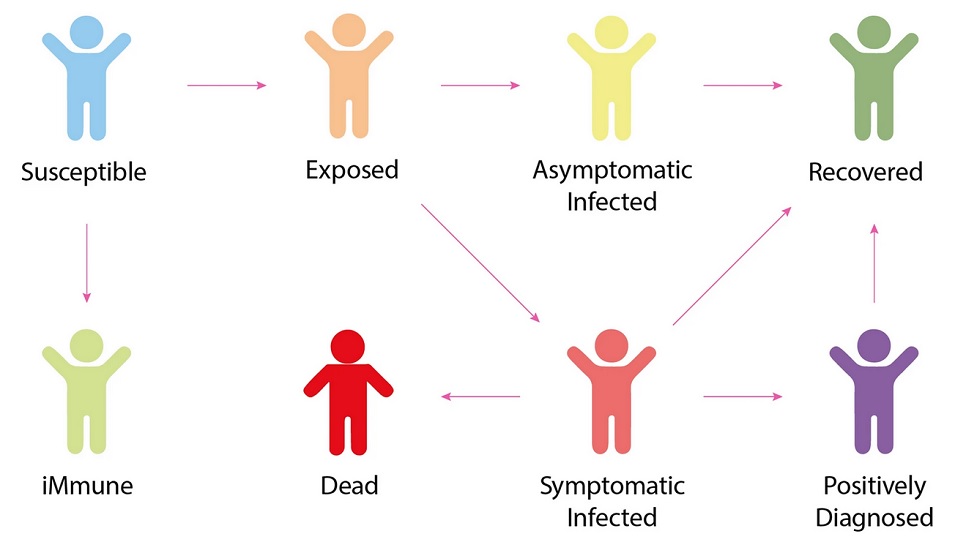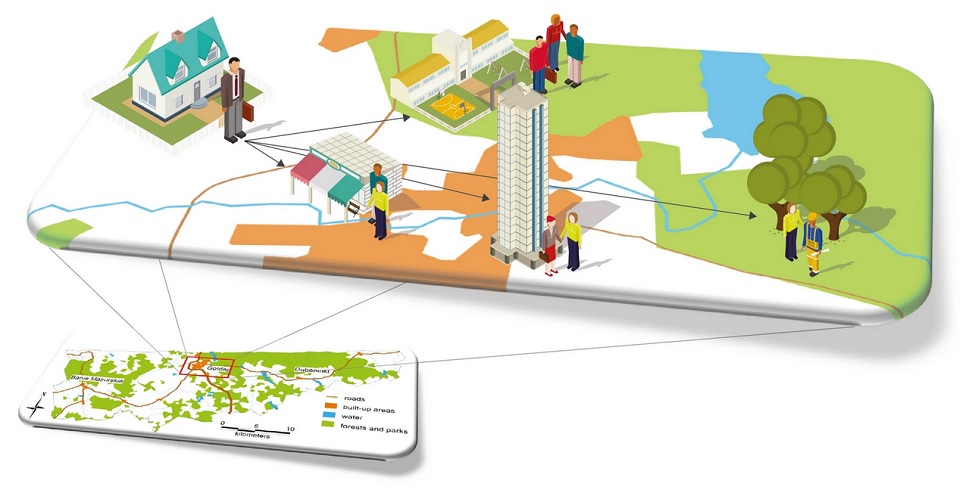MARCO will help in predicting the development of the pandemic
Researchers from the Warsaw University of Technology have developed a solution that will help in forecasting the development of the COVID-19 pandemic. An article on this subject has appeared in the prestigious "Nature Scientific Reports" journal.
The goal of the MARCO project's (the acronym of its name) was to develop a methodology for modelling the development of the pandemic on the regional level. It would help in building a decision support system in the area of social distancing.
– We wanted to be able to provide the answer in a decisive way, utilizing mathematical models and simulation systems, as to how modifying the restrictions could impact the COVID-19 pandemic's trajectory and development – explains Prof. Robert Olszewski from the Faculty of Geodesy and Cartography, the project manager.
Together as a team
The project had an interdisciplinary character. It involved researchers from two faculties of the Warsaw University of Technology: Geodesy and Cartography, who dealt with the collection of data and their transformation into useful information and knowledge, as well as computer scientists from the Faculty of Electronics and Information Technology. A sociologist from The Center for Innovation and Technology Transfer examined the social factors influencing the pandemic's spread.
Epidemiologists from the National Medicines Institute of the Medical University of Warsaw and socio-economic geography experts from the University of Warsaw were also part of the team. The results were compared with the leading models developed in the US and Europe by researchers from Harvard Medical School and the Academic Hospital in New York.
Over 80 variables
Considering both temporal and spatial differences, researchers sought to determine what factors. influence the number of cases.
– We analyzed 82 potential factors that may affect the increase or decrease in the number of contractions. The final model included 13 – says Prof. Robert Olszewski. – From demographic, epidemiological, and climatic factors to issues related to the topography of the area, building and road network density, the size of shops, but most importantly, the quantity and quality of restrictions implemented – he enumerates.
The analysis also included atmospheric factors, such as the daily temperature, humidity level, amount of sunlight, and day length.
Data first
To achieve their goal, the researchers needed a lot of data. They obtained it from various sources. Both governmental services under the Ministry of Health and the public gathered data on the number of people in individual counties, who got sick, recovered, or passed away. The epidemiological data also came from different countries.
The Polish National Census prepared by the Statistics Poland's was used to obtain data on population distribution, unemployment rate, age, gender, workplaces, educational institutions, and leisure activities. Google was used to analyze mobility.
Temperature, humidity, and day length information were obtained from the Institute of Meteorology and Water Management.
Everyone has an agent
– Having data, we need tools that can automatically transform it into useful information and knowledge. Agent-based modeling has proven to be the best solution we have adopted. Even though the approach is computer science-based, we have expanded it to include spatial and temporal factors – explains Prof. Robert Olszewski. – Imagine 38 million inhabitants, each of whom has a representative in this digital world, an agent – he adds.
The distribution of individual residents and the parameters assigned to them regarding, among other things, their place of residence, job, meetings, sleep time and activity, etc. were applied by the researchers on the base of topographical objects. In addition to mobility concerns, they also considered the weather conditions, issues with particular behaviors that are distinctive to different parts of Poland, and a variety of other previously mentioned parameters.
What If
– By launching such a system and introducing one infected person to it, we can check how quickly COVID-19 will spread in time and space – says Prof. Robert Olszewski. – However, the developed tool has a much wider application. By altering certain parameters, it can answer the "what if" question with different epidemiological assumptions. This way, it is also possible to examine the spread of technological and social innovations – he adds.
The researchers chose three test areas, diverse in terms of demographics, society, culture, partially the climate, but most importantly in terms of population density and the number of cases: Gołdap County in the north, Pruszków County in the Warsaw metropolitan area, Ropczyce-Sędziszów County near Rzeszów.
Please keep your distance
The research's findings contributed to halting the spread of the pandemic's subsequent phases. Introducing social distancing and reducing mobility is crucial to stemming it. – The number of infections and deaths would be far higher if we didn't employ them. This is a relatively obvious answer, but depending on the aforementioned factors, it would differ spatially – explains Prof. Robert Olszewski.
The number of cases is 2 to 3 times higher in a model with no restrictions than it is in the basic one. According to other studies, simply covering one's face with a cloth can significantly reduce the spread of the virus among individuals and decrease the daily rate indicator in COVID-19 infections by 40–60%.
The interactions between people at work have the greatest impact on how quickly the virus spreads. Depending on the variant and the county, it may be connected to 50–70% of infections. Commercial facilities, which are usually crowded, are also places with a high probability of virus transmission. In the basic model, 8.4 percent of people were infected when shopping indoors.
Publication in a reputable journal
The article "Using multiagent modeling to forecast the spatiotemporal development of the COVID-19 pandemic in Poland" was published in the "Nature Scientific Reports" journal. It is available in Open Access.
Authors: Piotr Pałka, PhD, Eng. from the WUT Faculty of Electronics and Information Technology, Prof. Robert Olszewski, Agnieszka Wendland, PhD, Eng. and Karolina Nowak, MSc, Eng. from the WUT Faculty of Geodesy and Cartography, Urszula Szczepankowska-Bednarek from the WUT Centre for Innovation and Technology Transfer Management, Małgorzata Kęsik-Brodacka from the National Medicines Institute and David Th. Liebers from NYU Langone Health.
The "Methods of analysis, forecasting and recommendation in the field of preventing the spread of COVID-19, with particular emphasis on geospatial analysis project was implemented under the WUT’s “Excellence Initiative: Research University” program. It received a grant in the IDUB against COVID-19 competition.










